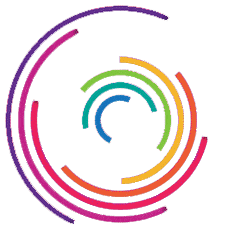
This short 'decision tree' will help you find out the answer.
Quality control
Keeping in mind these two points, we design automated visual inspection systems thatensure high production quality by reducing both false positive and false negative test results and minimize efforts required through the automation of monotonous visual inspection, grading and sorting tasks.
Automated visual inspection software can analyse images to detect and classify the following features:
Surface defects: scratches, stains, nodules, etc.
Positioning and orientation: correctness of assembly components’ orientation
Dimensions, shapes and angles
Completeness: components on a printed circuit board, barcodes on a parcel, filling level of a bottle
Texture
Color and reflectivity
Presence of foreign objects
Depending on your specific needs, we will design and develop a solution that fits them best.
Machine vision has a number of advantages in comparison with human vision:
Higher optical resolution;
Measures absolute dimensions and intensity values;
Wider “visible” spectrum;
Very fast and precise calculations;
Higher processing speed;
“Absolute” memory.
Besides that, the automated visual inspection systems have several pros that are intrinsic to the entire machine kind:
Unbiased;
Persistent;
Work without fatigue;
Follow instructions unquestionably;
Can operate in risky and dangerous conditions.
The AVI system consists of:
Equipment that is responsible for image acquisition (lighting or a radiant; a digital camera, photometer, colorimeter, etc.), software running (a processor) and data output (monitor, printer, etc.);
Supplementary equipment (e.g. for grading and sorting);
Software that processes digital images and produces a valuable output.
As a software development company, Qrapp focuses on the “soft” part of the AVI system: we create applications that analyze images captured by a digital camera starting with the preprocessing and up to the final decision step.
Based on a decision derived in a complex process described above, automated visual inspection software shows the results on a display and commands to take an action depending on the challenge posed. It can automatically discard defective items or mark them for further human inspection. It can also sort and grade objects according to predetermined parameters, such as shape, size and color (e.g. automated apple grading).
We deliver custom machine vision software tailored to the specific requirements of manufacturers working in the following industries:
Aerospace
Automotive
Building materials
Ceramics
Electronics
Flat panel manufacturing
Food and packaging
Metals
Paints & coatings
Pharmaceutics
Polymers, plastics
Postal and parcel sorting
Semiconductors
Solar panel manufacturing
Textiles, fiber
Employing an AVI system for quality control in the production line brings a range of benefits. In particular, it helps:
Save money and increase profitability;
Reduce defects and improve safety;
Increase yield and reduce waste;
Shorten delivery time;
Comply with rules and regulations.
Several challenges can affect the accuracy of automated visual inspection. However, it is possible to overcome them either by adjusting the initial conditions of acquiring raw digital data or by implementing special methods at the image analysis stage.
Object variability: For complex objects, significant variations exist in the appearance of both normal and defective items.
Solution: dataset augmentation.
The decision-making part of the AVI system is based on machine learning methods. In order to learn how to distinguish between normal and defective objects, it needs a large dataset of possible variations in their appearance. Having enough data to train this machine learning algorithm, we can ensure its ability to make accurate decisions.
Very small and non-distinctive details: Recognizing features and objects may be difficult if they have a very small size (such as PCA components) or melt into background (a grey caption on a grey background).
Solution: implementing advanced image preprocessing, segmentation and feature extraction techniques.
Machine vision software uses a number of techniques to distinguish indistinguishable. Depending on the task, our specialists will select the most appropriate techniques to enhance the image and extract valuable information.
Illumination variability: Changes in the illumination affect the resulting images creating new lines and disguising existing ones.
Solution: 1) ensuring uniform lighting conditions; 2) implementing advanced algorithms.
Although uniform illumination makes automated visual inspection much easier, it is possible to mitigate the effects of bad illumination to some extent using more sophisticated preprocessing and edge detection algorithms.
Qrapp has been delivering software consulting and solutions for 5 years already. Our team of 150 IT consultants, software architects, developers and testers is ready to solve any challenges that automated visual inspection can pose.
Our software consultants, in their turn, are eager to discuss your needs and requirements and suggest the most appropriate solution.
Programming languages:
C++
MATLAB/Octave
R
Python
Objective-C
Libraries and frameworks:
OpenCV 2.x, 3.x
Caffe
CVL C++ by Cognex
tesseract-ocr
MatConvNet
Numpy
Platforms:
Linux
Windows
We are always ready to consult you and propose a solution fitting your inspection requirements best. Feel free to contact us to receive more information and set up a fruitful partnership.
We’d love to stay in touch. Describe the digital challenge you’ve faced, and we’ll get back to you with a solution we can offer.